Sick of Being Stuck is reader-supported. When you buy through links on my site, I may earn a commission. Disclosure.
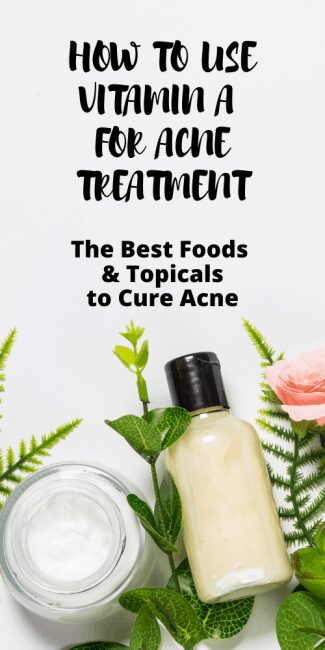
Banishing acne in all forms may include cleansers, treatments, topical creams, and oral medications. Among all acne treatments, there is one common ingredient: Vitamin A.
Vitamin A for acne is a delicate balance. You need enough (but not too much) and you need it in the right form (because the wrong form can cause more problems). When you know how to use it, Vitamin A for acne might be the secret weapon you are looking for.
Two big players in the acne world are Retin-A and Accutane. Both of these popular drugs have a synthetic form of Vitamin A as the active ingredient. They can be very effective, and also have serious side effects.
So how can we get the benefits of real, good vitamin A without dangerous side effects? That’s exactly what I’m here to do for you.
Can’t always get vitamin A in your diet? Then consider this retinol cream as another source to add to your nightly routine.
How Does Vitamin A Help Fight Acne?
Vitamin A for acne comes in two forms: carotenoids and retinoids. Not all Vitamin A for acne is created equal, so it’s important to know the difference, and which one you’re looking for.
Carotenoids: Sounds a little bit like the word carrot, right? Carrots have a lot of vitamin A, or carotenoids. We often talk about carotenoids as beta-carotene (one form of carotenoids). There are other yellow-orange vegetables that carry this nutritional resource as well, but the most popular is carrots. The carotenoids we find in our food accounts for about 1/3 of the vitamin A intake for Americans.
Retinoids: The other 2/3 of our Vitamin A for acne typically comes from retinoids. This is found in animal products like eggs, dairy, meat, and other common food items. You may hear terms like retinoid, retinal, etc. in skincare products. That’s because retinoids are the most usable form of Vitamin A that are biologically active, so it’s easy for the body to put to use right away.
So what does Vitamin A for acne actually do for the skin? I’m so glad you asked.
Benefits of Vitamin A for Acne
The biggest benefit of Vitamin A for acne is that it is a powerful antioxidant that helps combat free radicals. Image a battle going on in your skin. Free radicals run rampant, they go around increasing oil production and helping the bacteria to grow causing more breakouts. Vitamin A for acne comes in and gets rid of the free radicals so the skin is no longer a battleground, but a calm oasis.
As Vitamin A beats the free radicals, it slows down the turnover of skin cells. This may sound counterproductive at first. Don’t we want fresh new skin all the time? Not necessary. Too much skin shedding causes clogged pores and excess dead skin build-up and turns into acne.
With Vitamin A for acne on the scene, this is slowed down and can have a dramatic impact on the appearance of your skin. Vitamin A also reduces the amount of oil in your skin and protects against cell damage and inflammation. Sounds like a powerhouse, right? That’s because it is.
How To Tell If You Are You Vitamin A Deficient
This is not an easy question to answer unless you have a blood test. Vitamin A is stored in the liver and released as necessary. It is only when the liver runs out of Vitamin A for acne that deficiencies will show up on a blood test. Early signs of Vitamin A deficiency include:
- Night blindness
- Impaired immunity
- Rough, dry skin.
These symptoms will likely only show up when you’re in a serious deficiency. However, less-than-ideal levels of Vitamin A can still show up and cause irritating acne even without a blood test proving a medical deficiency. Most people with acne, especially those with swollen, red, and painful zits are likely suffering from a Vitamin A deficiency.
Keep in mind as well that because we can store Vitamin A for acne for when it’s needed, you can get it in spurts. That means a dinner of liver, for example, can supply you with enough vitamin A to last you until next week.
How Much Vitamin A Do I Need for Acne?
Most supplements give you close to 5,000 IU per day. For battling acne, we recommend doubling this amount. Aim to get 10,000 IU of Vitamin A for acne, mostly in the form of retinol, each day.
How Do You Use Vitamin A for Acne?
The two most effective ways to get the recommended amount of Vitamin A for acne is through nutritional foods and additional supplements (but not a vitamin A supplement – more on this later!).
Food
Foods with the highest Vitamin A for acne content are:
- beef liver – 31,718 IU per 100 g
- chicken liver – 13,328 IU per 100 g
- butter – 2,500 IU per 100 g
- beef kidney – 1,578 IU per 100 g
- cream – 1,470 IU per 100 g
- eggs – 520 IU per 100 g
- whole milk – 200 IU per 100 g
Other foods that are rich in Vitamin A for acne include:
- orange and yellow vegetables, such as carrots and sweet potatoes
- cantaloupe
- apricots
- mangoes
- green leafy vegetables
- salmon
You can get your 10,000 IU by eating a variety of Vitamin A rich foods to promote overall skin health. Make sure you balance your vitamin A intake with at least 4,000 IU of vitamin D3 each day, either from sun or supplements, plus sources of vitamin K2 (fermented foods).
Check any multivitamin supplements you may be taking. If they contain vitamin A (as retinol, beta-carotene, or something else), discontinue them.
If you are starting your natural acne journey, I would recommend checking out my post about natural acne treatments. It covers all aspects of your life to clean up if you want clear skin!
Topical Vitamin A for Acne Treatment
I have been there as well when I feel that I could eat the healthiest in the world and it wouldn’t be a fix for my stubborn acne. Luckily, there are additional things we can do in our beauty regime to help combat blemishes. One of these is vitamin A serums and cosmetic products.
Which Kind of Vitamin A is in Skin Care Products?
As you peruse skincare products, you’ll likely find terms like Retinol, Pro-Retinol, and Retinoic Acid. These ingredients are all forms of Vitamin A for acne, the most effective form of topical Vitamin A for acne is going to be in the form of a cream or serum. Some of these may be found over the counter or may be prescribed by a doctor.
Retinol Products:
Retinol is one of the most common vitamin A ingredients in skincare products. This form of Vitamin A is soluble and can be transported easily through the bloodstream. However, it breaks down quickly when exposed to oxygen, so take care to not expose the product to air except when in use.
My favorite retinol product is SkinCeuticals .5% Retinol. I highly recommend this product because it is the closest you can get to tretinoin without having to go to the dermatologist and getting a prescription.
“Pro-Retinol” is the commercial term for what is called retinyl acetate. This is one of the most popular for skincare treatments because the skin can easily convert this ingredient into usable vitamin A. However, much of the product is not actually absorbed or used by the skin. So it can take a lot of product with consistent use to see a difference.
Retinoic Acid Products:
If you see a product that claims to have retinoic acid as an ingredient, walk away. This is the form of vitamin A that can only be formed at the cellular level.
How To Use Vitamin A On Your Skin
When you’re starting with Vitamin A on the skin, look for a product with .25% concentration to start with. A recent study found even these products with relatively low concentrations can be effective.
- When you start using Vitamin A on your skin, start gradually to reduce redness and peeling
- Continue for at least 6 weeks as it takes 28 days for cell turnover
- Use at night after moisturizer
- Use smaller amounts and slowly build up a tolerance to use a 1-inch length of cream.
(Please do not cake it on!)
Can I Take Vitamin A Supplements for Acne?
Vitamin A supplements may help improve your skin health. However, they should be used only if you don’t already get enough Vitamin A for acne through diet alone, or if you don’t already take a multivitamin. They can be useful for those who have a limited or poor diet. Because the FDA doesn’t monitor the purity or quality of supplements, the best way to get Vitamin A for acne is through your food or topicals.
Can I Overdose on Vitamin A?
Probably not, but it depends on the form of Vitamin A you are taking. It is almost impossible to overdose on Vitamin A rich foods. You can never eat too many vegetables and give yourself Vitamin A toxicity. However, it is possible to overdo it on supplements and that can cause serious damage. Too much vitamin A can lead to adverse health effects, including liver damage. Birth defects are also possible if you take excessive amounts of Vitamin A while pregnant.
One easy way to check your Vitamin A dosage is to check your palms. When your skin becomes saturated with vitamin A, the calluses on the palms of your hands (and the soles of your feet) will start to take on an orangey hue. If you notice this oompla-loompa-esque color, back off to a lower dose.
You can also check your thyroid to keep your Vitamin A in check. Monitor your thyroid status by tracking your waking temperature and pulse. If both of those are lower than normal, it may indicate too much Vitamin A.
What Are the Side Effects of Vitamin A?
Side effects from too much Vitamin A for acne in supplement form can include dizziness, nausea, vomiting, headaches, and even coma. Keep in mind these side effects are only from supplemental forms of Vitamin A, not from eating too many carrots.
The Takeaway
Vitamin A is an essential nutrient for overall health, and can be significantly impactful on our skin health. While Vitamin A won’t cure acne alone it can be a powerful force in the battle against acne by fighting free radicals.
The best way to get Vitamin A for acne is from natural sources incorporated into your diet. When it comes to treating acne with Vitamin A, topical creams and serums can be beneficial, but supplements should only be used with caution. The secret sauce for acne-prone skin is the perfect combination of good skincare practices and a healthy diet of Vitamin A.





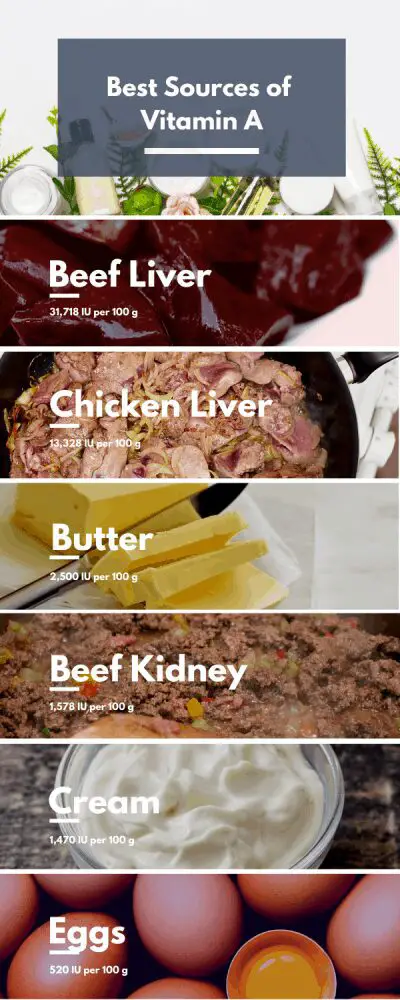




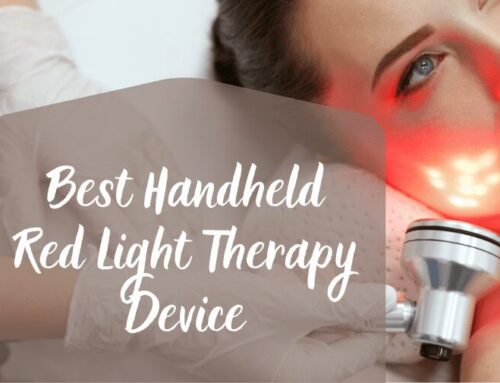
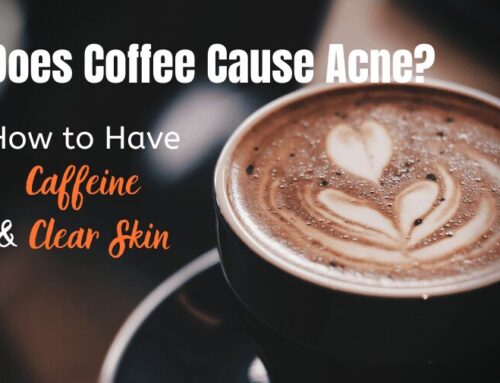
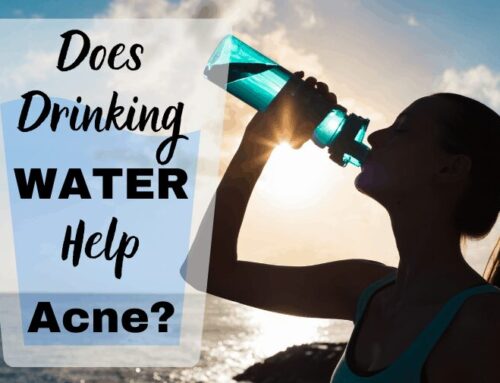
Leave A Comment